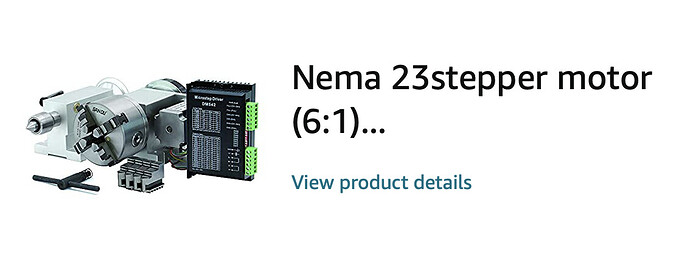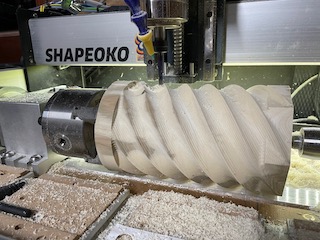I noted the new spindle kit and am intrigued. I’ve not done much in terms of upgrades, just switching out to steel core belts and the Z-plus. I bought my machine in ~April 2019 and noted that I’ll need a new controller board ($140) as a result.
I’d already been looking into 4th axes options and know it’s a can of worms. I’m still wrapping my head around the electronics and configuration required to pull it off. I add this, as upgrading electronics down the road had already come to mind, and I’ve seen that others here have done it.
My question boils down to: if I have to buy a replacement C3D board anyway, would I be better off going with something else?
I’d also be open on any input on why not to go with C3D’s spindle. The plug and play compatibility is very attractive, and for my small setup I don’t plan to go water cooled anyway (more to worry about, small space, added complexity).
@Julien maybe this is off-topic/too detailed for your e-book… but I did wonder if dedicated, formalized sections on electronics upgrade options, what maintains Carbide Motion compatibility vs. not, other considerations, all that… might be of interest?
I wanted to keep the top short to cut to the chase, but will add the following if it helps in answering.
Controllers that have come up and aren’t too much more include Ethernet Smoothstepper, BlackBox, xPro X5, and the Gecko 540. Or heck, something crazy like this. If I were to go 4th axis, I don’t think any of these could do true 4th axis; I’d be swapping Y for A when I use it, as they only have 4 motor outputs (maybe minus the ESS?). Feel free to correct my thinking, as I admit the full picture of electronics still confuses me a bit… like whether the board determines that one must use GRBL, and differentiating options that have built-in drivers vs. being purely a G-code receiving interface for dedicated, separate drivers.
Also, I admit I can’t really define a specific thing I’d be looking to resolve, per se, I just don’t want to sink $140 on getting the same thing I already have if there are advantages to doing something else (for not a ton more). I’ve seen folks allude to limitations/downsides of GRBL for example, but not explicitly state what’s sup-optimal? I do experience random and very infrequent disconnects. Sometimes I think it’s me bumping the USB cord and momentarily disconnecting, very rarely it seems totally random during a cut, and more frequently I’ve correlated it to turning off my router at a specific time (like right before doing to home position after a cut, which I figure is some EMF thing).

